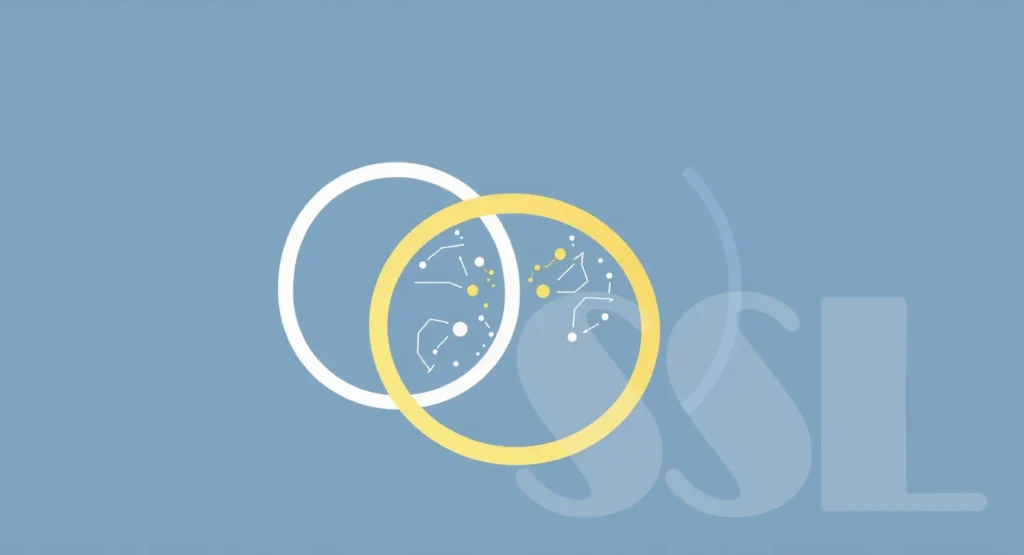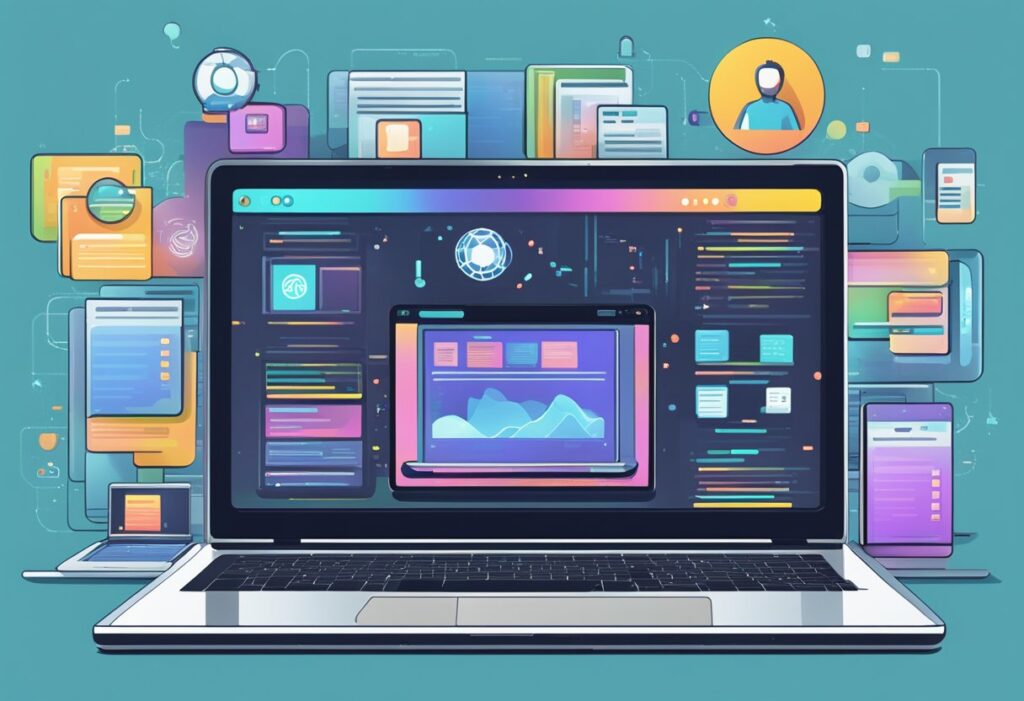
The Rise of Self-Supervised Learning in AI
The buzz around self-supervised learning is impossible to ignore. It’s not just another fancy term in the tech world; it’s a paradigm shift. Traditionally, AI development has been a playground for large corporations with vast resources. But with self-supervised learning, the landscape is changing. We’re entering an era where AI is becoming more accessible, opening doors for small businesses, startups, and even solo developers to create innovative solutions.
Understanding Self-Supervised Learning: A Game-Changer
So, what exactly is self-supervised learning? Imagine teaching a child to recognize objects without explicitly labeling everything they see. That’s the essence of self-supervised learning. Unlike traditional supervised learning, where data needs to be meticulously labeled, self-supervised models learn by finding patterns in unlabeled data. This method is not only cost-effective but also drastically reduces the time needed to develop powerful AI models.
Why Self-Supervised Learning Matters
Self-supervised learning is more than just a new technique; it’s a catalyst for change. It’s leveling the playing field by reducing the dependency on vast labeled datasets, which have been a major barrier to entry in AI development. This approach enables developers to harness the power of big data without needing to invest heavily in data labeling. The result? More diverse applications, greater innovation, and a broader range of voices contributing to AI’s evolution.
Bridging the Gap: AI for All
One of the most exciting aspects of self-supervised learning is how it’s democratizing AI. Historically, AI was the domain of tech giants with massive datasets and deep pockets. But now, with this new learning method, the barriers are crumbling. Small and medium-sized enterprises (SMEs) can now compete on a more equal footing, using AI to enhance their products and services without the need for expensive, labeled datasets. This is a significant step towards making AI inclusive and accessible to a wider audience.
How Self-Supervised Learning Differs from Traditional Methods
Traditional AI models rely heavily on supervised learning, where models are trained on labeled data—think of it as learning with a teacher who provides the correct answers. But this approach is not only time-consuming; it’s also limited by the availability of labeled data. In contrast, self-supervised learning models are like students who figure things out on their own. They analyze data, recognize patterns, and make predictions without needing explicit labels. This shift not only accelerates development but also expands the possibilities of what AI can achieve.
Key Benefits of Self-Supervised Learning
The benefits of self-supervised learning are profound and multifaceted. First, it significantly reduces the cost of AI development. Without the need for extensive labeled datasets, organizations save both time and money. Second, it enables AI models to learn from a broader range of data, including those that are difficult or expensive to label. This leads to more robust and versatile models that can handle a wider array of tasks. Finally, self-supervised learning often results in better generalization, meaning the AI can perform well even on data it hasn’t seen before, which is crucial for real-world applications.
The Role of Big Data in Self-Supervised Learning
Big data is the fuel that powers self-supervised learning. As the amount of digital information grows exponentially, so does the potential for creating more intelligent and adaptable AI models. The beauty of self-supervised learning lies in its ability to make sense of vast amounts of data without the need for manual intervention. This is especially valuable in industries like healthcare, finance, and e-commerce, where data is abundant but not always labeled. By leveraging big data, companies can build AI systems that continuously improve and adapt, leading to smarter, more personalized experiences for users.
Impact on Small and Medium Enterprises
For small and medium enterprises (SMEs), self-supervised learning is nothing short of a game-changer. In the past, the high costs associated with AI development put cutting-edge technology out of reach for many smaller businesses. Now, SMEs can harness the power of AI without needing the same level of investment as their larger counterparts. This levels the playing field, allowing them to innovate, improve efficiency, and even disrupt established industries. For example, a small e-commerce company can use self-supervised learning to better understand customer behavior, personalize recommendations, and optimize inventory—all without a massive data science team.
Challenges in Implementing Self-Supervised Learning

While the potential of self-supervised learning is immense, it’s not without its challenges. One major hurdle is the complexity of implementation. Developing models that can effectively learn from unlabeled data requires a deep understanding of both the data and the underlying algorithms. Additionally, self-supervised learning often requires significant computational resources, which can be a barrier for smaller organizations. There’s also the challenge of ensuring data quality. Since the model learns from the data itself, any biases or inaccuracies in the data can lead to flawed models. Overcoming these challenges requires careful planning, investment in infrastructure, and ongoing research and development.
Innovative Use Cases: From Healthcare to Education
Self-supervised learning is already making waves across various industries. In healthcare, for instance, AI models trained with this method are being used to analyze medical images, predict disease outbreaks, and even assist in drug discovery. These models can learn from vast amounts of medical data without the need for extensive labeling, making them invaluable in situations where labeled data is scarce. In education, self-supervised learning is being used to create more personalized learning experiences, adapting to students’ needs in real time. This technology can also help educators identify at-risk students early on, providing interventions that can improve outcomes.
The Future of AI Development: Powered by Self-Supervision
The future of AI development is poised to be heavily influenced by self-supervised learning. As AI continues to evolve, this approach will likely become the standard, driving innovation across countless fields. The ability to learn from vast, unlabeled datasets will lead to the creation of more sophisticated models that can tackle complex problems with greater accuracy. We can expect AI systems to become increasingly autonomous, capable of self-improvement without constant human oversight. This shift will not only accelerate the pace of AI development but also broaden its application across industries, from autonomous vehicles to advanced robotics.
How to Get Started with Self-Supervised Learning
Diving into self-supervised learning can seem daunting, especially with its cutting-edge nature. However, with the right resources and approach, you can begin experimenting and building models in no time. Here’s a step-by-step guide to help you get started:
1. Understand the Basics of Machine Learning
Before jumping into self-supervised learning, it’s crucial to have a solid grasp of machine learning fundamentals. Make sure you’re familiar with concepts like:
- Supervised vs. unsupervised learning
- Neural networks and deep learning
- Overfitting and generalization
- Data preprocessing and augmentation
Resources like the “Deep Learning Specialization” by Andrew Ng on Coursera or “Practical Deep Learning for Coders” by Fast.ai are excellent starting points. These courses will give you the foundational knowledge needed to understand more advanced topics.
2. Learn About Self-Supervised Learning Techniques
Once you’re comfortable with the basics, start exploring the specific techniques used in self-supervised learning. Key areas to focus on include:
- Contrastive learning: Learning by comparing different data points.
- Autoencoders: Learning by reconstructing input data from compressed representations.
- Generative models: Learning to generate data that resembles the training set.
- Transformers: Particularly in NLP, where models like BERT and GPT use self-supervised pre-training.
Read foundational papers such as “Representation Learning: A Review and New Perspectives” by Bengio et al., and explore tutorials and blog posts that break down these techniques.
3. Experiment with Pre-built Models and Frameworks
Don’t start from scratch—leverage existing frameworks and models. Platforms like PyTorch and TensorFlow offer pre-trained models and libraries that you can use as a base.
- Hugging Face Transformers: A library that provides pre-trained models for NLP tasks, which often use self-supervised learning techniques.
- Facebook AI’s PyTorch Hub: Provides models for various tasks, many of which use self-supervised learning.
Experiment with these tools to understand how they work. Modify existing models, tweak hyperparameters, and observe how changes affect performance.
4. Start with Simple Projects
Begin with small, manageable projects that allow you to apply what you’ve learned. For example:
- Image classification using contrastive learning: Train a model to classify images using a dataset where labels are scarce or unavailable.
- Text generation using transformers: Build a simple text generation model using a pre-trained transformer model and fine-tune it on a specific dataset.
These projects will help you get hands-on experience with the principles of self-supervised learning and how they can be applied to real-world problems.
5. Engage with the Community
Learning in isolation can be tough, especially with rapidly evolving fields like self-supervised learning. Engage with the community to stay updated and seek guidance:
- Join online forums and communities: Reddit, Stack Overflow, and specialized AI communities like Papers with Code offer platforms to discuss ideas and troubleshoot issues.
- Follow AI researchers on social media: Many researchers share their latest work on Twitter and LinkedIn, providing insights and updates on self-supervised learning.
- Attend webinars and conferences: Events like NeurIPS and ICML often feature talks on the latest advancements in self-supervised learning.
6. Stay Updated with the Latest Research
Self-supervised learning is a fast-evolving field, with new techniques and improvements emerging regularly. To stay at the forefront:
- Read academic papers: Websites like arXiv and Google Scholar are great places to find the latest research.
- Follow AI research blogs: Blogs from DeepMind, OpenAI, and others often discuss the implications of new findings.
- Subscribe to newsletters: Newsletters like The Batch by deeplearning.ai provide regular updates on significant developments in AI.
The Democratization of AI: Opportunities and Risks
The democratization of AI through self-supervised learning brings a wealth of opportunities, but it also comes with potential risks. On the positive side, making AI more accessible can drive innovation, level the playing field, and empower a wider range of individuals and organizations to contribute to the AI revolution. However, there are concerns about ethics and governance. As AI development becomes more decentralized, ensuring responsible use becomes more challenging. There’s also the risk that widespread access to AI tools could lead to unintended consequences, such as the creation of biased models or the misuse of AI in ways that could harm society. Balancing accessibility with oversight will be crucial as we move forward.
Experts Weigh In: The Next Frontier in AI
Industry experts agree that self-supervised learning represents the next frontier in AI. Leading researchers and practitioners are excited about the potential of this approach to unlock new levels of intelligence and autonomy in machines. According to some, we are only scratching the surface of what’s possible. As more organizations adopt self-supervised learning, we’ll likely see breakthroughs that were previously unimaginable. However, experts also caution that the journey won’t be without its challenges. Developing truly robust, generalizable AI systems will require ongoing innovation, interdisciplinary collaboration, and a commitment to addressing the ethical implications of these powerful technologies.
Resources
Self-Supervised Learning and Its Applications in Natural Language Processing” by Goyal, M., and Agrawal, R.
Research Paper: ResearchGate
A detailed exploration of how self-supervised learning is transforming natural language processing.
Hugging Face Transformers Library
Website: huggingface.co
Hugging Face provides tools and models for implementing self-supervised learning, especially in NLP tasks.





